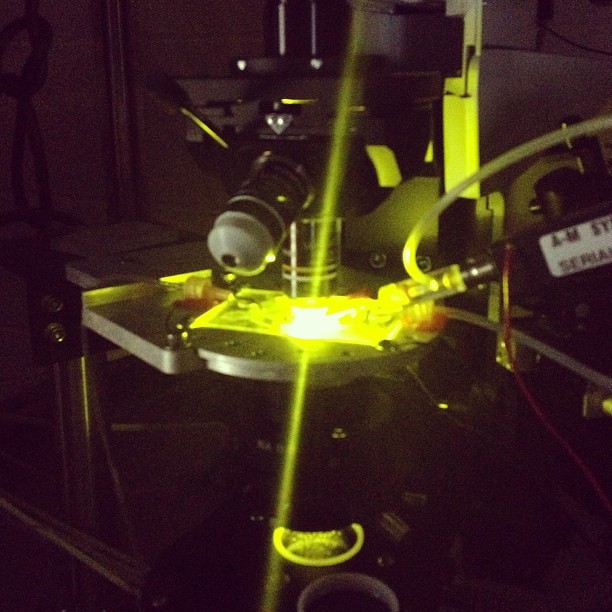
In optogenetics, which controls neuronal activity by shining light, a paper has been published that has succeeded in controlling neurons in the brain by shining light from outside without performing brain surgery.
Optogenetics was proposed by Stanford University neurobiologist Karl Deisseroth. Optogenetics is a field of study in which cell activity is studied using a new technique that induces cellular information by light stimulation by expressing a photosensitive protein that responds to light in cells by gene editing.
A paper published in 1991 by Peter Hegemann, the Max Planck Institute of Biology and others, who opened the door to optogenetics for the first time. They noted that the single-celled algae Chlamydomonas changed the direction of swimming along with the light, and found that the light-sensitive protein rhodopsin was involved in a structure in which light influences the movement of Chlamydomonas.
In 2005, Carl Dithers succeeded in controlling neuronal activity in milliseconds through light by expressing the channel rhodopsin2 ChR2, a kind of light-sensitive protein, in neurons derived from the hippocampus in a culture dish.
In 2007, a paper was published stating that it succeeded in applying optogenetic technology in living mouse neurons. Accordingly, Daiseros succeeded in an experiment that applied optogenetic technology to induce fear memories in mice with light. In 2013, a Japanese research team succeeded in creating fruit memories artificially by shining light.
In order to manipulate nerve cells in a living mouse brain with light, optical pulses must be irradiated into the brain that controls the cells, and implants through surgery such as small wireless implants and elastic spinal implants from tethered optical fibers were required.
Dithers expressed a new light-sensitive protein called ChRmine, discovered in marine life in 2019, in mouse brain cells. And by shining red light from the outside of the skull, he succeeded in controlling the brain and brainstem neurons up to 7 millimeters deep in milliseconds.
Existing optogenetic technologies had to inject a virus injected with a specific trait gene into the brain in order to express light-sensitive proteins. To prevent this, the research team took a method of injecting the blood with a PHP virus developed by the California Institute of Technology in 2016. In other words, not only the light source but also the light-sensitive protein gene was injected in a non-invasive method for the brain.
The research team is testing whether the published non-invasive method can be applied to fish as well as mice. In cooperation with another research team, it is said that it is also conducting research applied to non-human primates. The research team added that this will be the end of research that has been conducted for 16 years, and hopes to be a widely applicable research tool. Related information can be found here .

